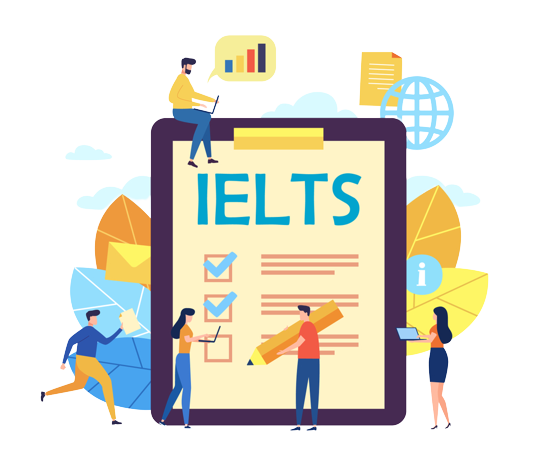IELTS / TOEFL

1. The Academic IELTS is the most popular IELTS type, as it is the most versatile. You can use the Academic IELTS for applications to universities all over the world and it is widely-recognized as the most thorough preparation for university level courses. (IELTS and TOEFL)
2. However, this means that it is significantly different from English you may have encountered in daily life or in your average General English class. The language in the Reading and Listening texts may include scientific or academic vocabulary and may be at a ‘higher’ level.
3. Fortunately, The Abrostudies Writing Course focuses on the strategies you will need to answer the questions effectively, and the IELTS Reading and IELTS Listening courses are designed for both the Academic and General IELTS tests. IELTS and TOEFL


IELTS & TOFEL preparation with Abrostudies
1. The TOEFL (“Test of English as a Foreign Language”) is a standardized test that measures a test-taker’s mastery of the English language. TOEFL scores are primarily used by universities as part of the admissions process.
2. Typically, those who take the TOEFL want to attend university or graduate school abroad. But anyone who needs to demonstrate a mastery of English for an academic purpose can take the TOEFL. This includes anyone applying to a foreign high school, exchange program, community college, or for a student visa.
3. The TOEFL focuses on how English is used in an academic setting, which is why schools and universities use TOEFL scores for admissions purposes. The reading passages in the TOEFL use formal, academic language and high-level vocabulary rather than casual or conversational English.

IELTS: A Holistic Approach to Language Evaluation
1. The International English Language Testing System (IELTS) evaluates candidates in four essential language skills: Listening, Reading, Writing, and Speaking. Designed to provide a comprehensive overview of an individual’s English proficiency, IELTS is widely accepted by educational institutions and employers globally.
2. In IELTS, passive voice constructions are strategically incorporated into written tasks, contributing to approximately 10% of the evaluation criteria. These structures add a layer of complexity to the language, emphasizing not only grammatical accuracy but also the ability to convey information in a nuanced manner.
TOEFL: A Digital Journey of Language Mastery
1. The Test of English as a Foreign Language (TOEFL) adopts an internet-based format, assessing similar language skills as IELTS. However, TOEFL places a strong emphasis on academic English proficiency, as it is often used for university admissions.
2. In TOEFL, around 10% of the written tasks feature passive voice constructions, mirroring the demands of academic discourse. This intentional inclusion aims to evaluate the test taker’s ability to understand and produce complex sentence structures, aligning with the expectations of academic environments.
Strategies for Success in IELTS and TOEFL
1. To excel in both IELTS and TOEFL, test-takers should focus on a well-rounded language preparation strategy. Active engagement in practice tests, honing listening skills, and cultivating effective writing techniques contribute to a comprehensive approach.
2. As the exams incorporate passive voice constructions, mastering this grammatical feature becomes imperative. The ability to use passive voice structures appropriately showcases a higher level of language proficiency, enhancing the overall quality of written responses.
